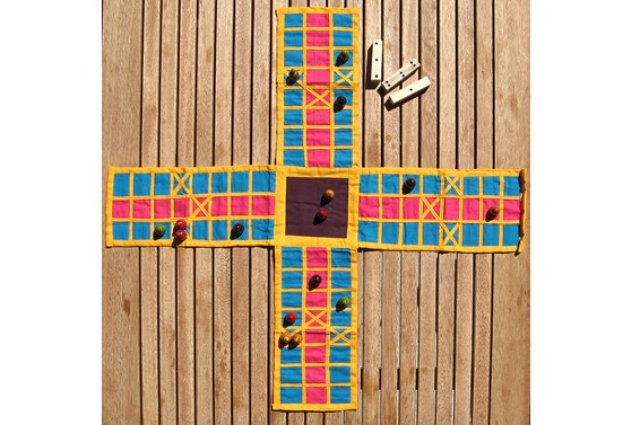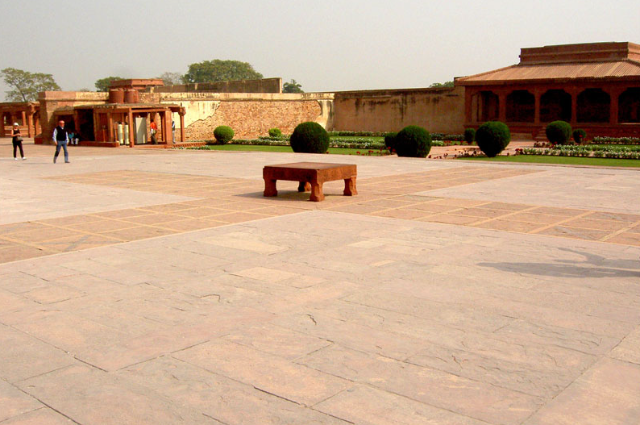
Source: wikipedia
“Never say never because limits, like fears, are often illusions.” - Michael Jordan
Every individual has got a unique personality. The personalities of those become popular who don’t fear to expose their uniqueness and practise more and more to get better at it. Ever thought what is the one thing which could enhance our beautiful personality and doesn’t restrict us from exposing it? Confidence! Yes, you heard it right. Confidence is something which makes us love our personality and helps us fight the fear of facing the world. One important aspect which helps us gain confidence to embellish our amazing personality is – SPORTS.
Sports doesn’t just help us stay fit mentally and physically but it makes us count every millisecond in a day and makes us realize the worth of every millisecond. It helps us understand our body and mind. Sports make us curious to push ourselves to the farthest extent to bring out the best in us. People often fear before getting into sports because they doubt their ability. It is normal human nature to doubt our abilities but the ones who challenge themselves to prove their ability, achieve greater goals in life. Just like Robert Frost highlights the importance of decision-making in his poem “the road not taken.” Risk is there in every situation but if you’ve got that gut feeling then go for it, give your best because time flies by and waits for none. Well, the fun fact is that sports actually help us a lot with time management. Sports doesn’t just help us build our personality but it also, helps us understand camaraderie. Sports help us to deal with failures and skills us to make our weaknesses our strength. Opponents get to learn to respect each other irrespective of, who wins or loses the game.
So, India is a diverse country not only in terms of religion, culture, flora, and fauna but also, sports. Various states of India have some specific unique sports which are being played for a long time now. For example, Kalaripayattu, also known as Kalari, is an ancient form of martial arts that holds its root in Kerala. The word Kalari appears in various Hindu texts to describe a battlefield and combat arena. Kushti, also called Pehalwani, refers to wrestling contested in Ancient India. It developed during the Mughal era by combining the techniques of Persian koshti pahlevani and native Indian Malla-yuddha. The origin of this sport dates back to the 5th century BC, where it was popularly known as Malla-yuddha, meaning combat wrestling. Yubi Lapki, which translates to coconut snatching, is an individual contact sport that requires coconut. It is an ancient Indian game that originated in Manipur. Kambala is an annual buffalo race held in Karnataka, during the Kambala season that begins from November and lasts till March. It started as a traditional sport to entertain the rural public by whiplashing buffalos on a slushy paddy field. Well, the deeper you dig, the more curious you get and I assure you that the more surprising it will be for you to observe our beautiful, diverse India. Few of the sports I’ve mentioned above deal specifically with our body power. I agree that our mind plays a vital role in fuelling our body but, have you ever heard of an ancient Indian sport which is primarily a mind sport?
Pachisi is the ancient traditional chess of India which is derived from the Hindi term ‘pachees’ meaning twenty-five (25) which is the largest score a player can throw using the cowrie-shells. It is a mind sport. It is a cross and circle board game which originated in ancient India. This sport is also mentioned in the ancient text Mahabharata. Pachisi is a game for two, three, or four players, four usually play in two teams. One team has yellow and black pieces, the other team has red and green. The team which moves all its pieces to the finish first, wins the game. Each player has four beehive-shaped pieces (this can be increased to up to 16 pieces on each side in some versions).

Source: wikipedia
The pieces of one player are distinguishable from another by their colours: black, green, red, and yellow. Six cowrie shells are used to determine the amount to move the players' pieces. The shells are thrown from the player's hand and the number of cowries which fall with their openings upwards indicate how many spaces the player may move. The board is usually embroidered with cloth and the playing area is in the form of a cross. There is a large square in the centre, called the Charkoni, which is the starting and finishing position of the pieces. The four arms are divided into three columns of eight squares. The players' pieces are moved along these columns during play. Twelve squares are specially marked as castle squares. Four of these are positioned at the end of the middle columns of each arm; the other eight are four squares inwards from the end of the outer columns on each arm. A piece may not be captured by an opponent while it lies on a castle square.

Source: wikipedia
Each player's objective is to move all four of their pieces completely around the board, counter-clockwise, before their opponents do. The pieces start and finish on the Charkoni. The playing order is decided by each player throwing the cowrie shells. The player with the highest score starts, and turns continue counter-clockwise around the board. Now, it is in the hands of the player to use their cowrie-shells wisely and mindfully. Many variants of this game are not only played within India but also, outside India. Like Chaupar is another variant of pachisi played in India, Parchis in Spain, Barjis in Syria, Parcheesi in the USA and Ludo is also a variant of Pachisi.
Chaupar was a common gambling sport at the court of the Mughal emperor Akbar in Agra and Fatehpur Sikri. The emperor himself was an addict and in the courtyard of his palace at Fatehpur Sikri he had laid out in flagstones a huge “board” where he and his courtiers enjoyed the game, using slaves as the playing pieces. It is also said that – “pachisi was called poor man’s chaupar.” As this game is played with cowrie shells which were used as currency by very poor people in 1000 BC - 1825 AD although, these cowrie shells weren’t acknowledged as legal by the government.

Source: wikipedia
It is important for us to realize that mental fitness and physical fitness go hand in hand. To play a sport physically well, we need our mind to stay focused, and to play a mind sport well, we need our physical body to stay calm. Technology has advanced so much that we can play sports in the form of games on our electronic devices but don’t you think playing a sport in real life is far more connecting than the reel life? If you’ve got an opportunity to try sports then, participate in it and make the best use of the opportunity available. Passion doesn’t exactly come innately. We need to build our passion. And, how can we do that? By exploring. Right? If we are ready to try different subjects and learn new things to find and build our passion then, why can’t we try sports? Sports are just like other subjects until and unless you try it you’ll not know what it beholds for you. Who knows? Sports might be the destination you’ve been looking for?
As Mike Singletary said -
“The favourite part of the game should be the opportunity to play.”
So, grab this opportunity and indulge yourself in various sports across the world. Sport allows us to gain confidence and increase our focus. And, these two things can help you achieve anything in life only if you are ready to face whatever comes your way to achieve your goals. Let’s realize the importance of sports and make sports a medium to learn each other’s culture and diversity.

